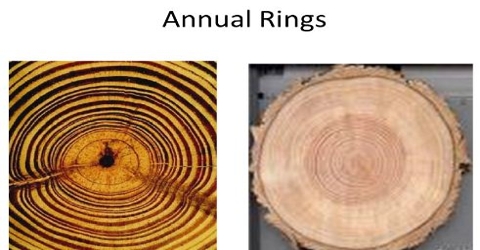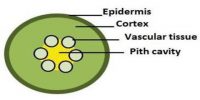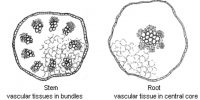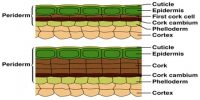Secondary growth takes place rapidly in plant body during the favorable season. As a result, secondary xylems having thin walls are formed. In adverse season secondary growth reduces remarkable producing small cells of thick walls. These thin walled large cells and thick walled small cells from two layers lying adjacent to each other. Therefore, in one year, these two layers combinedly form a ring with vessels of large cavities and thin walk (Spring wood) and vessels of narrow cavities and thick walls (autumn wood) known as annual ring.
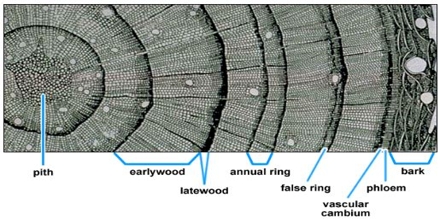
Formation of annual ring: In plant body, usually, according to seasons the activeness is seen in cambium, such as- in spring season cambium becomes more active. During this time, plenty of secondary xylem is formed. The wood which is formed with this xylem is called spring wood.
In adverse season i.e., in Autumn season when plants reduce their growth, cambium produce vessels with thick wall and narrow cavities. The wood that is formed with this xylem vessels in winter season is known as autumn winter.
Therefore, in one year normally two types of wood are formed and those two types of wood combined form a concentric rings, with vessels of large cavities and thin walls (spring wood) and vessels of narrow cavities and thick walls (late wood/autumn wood) are known as annual ring. By counting the number of annual rings, the approximate age of a plat can be estimated.
